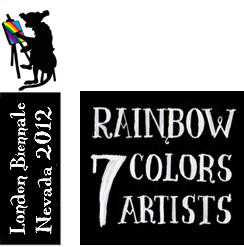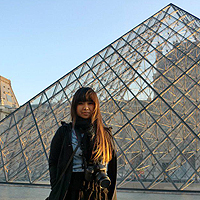
| FOUNDER | | | HOME | | | LB HISTORY & INFO | | | VENUES | | | PRESS & NEWS | | | FILM | | | CATALOG |


ERI KING [ORANGE] - ORANGE ASSEMBLY |
||
Eri King’s large-scale installations of donated consumer products investigate the contemporary roles of consumer identity. She collects an abundance of used clothing and discarded technological devices from the community and creates sculptures from these unwanted objects by bringing them into a new esteem of worth. Her attempts to recycle the efforts in labor are by reconstructing these once valuable items with her own practice of intensive manual labor. These sculptures take form in towering statures overwhelming the space and the viewer with its abundance as a way to confront the viewer of the waste of their own consumptions. In 7 Artists, 7 Colors for The London Biennale Satellite Project, King was assigned the color ORANGE. Continuing her dialogue with the current consumer, she interpreted the color in two main manners: secondary color and the convict. With the boundaries of intensive manual labor in her practice, she had always limited her process primarily as a solo creator. When approaching the concept of secondary, she was interested in extending her practice by giving the viewer a sense of being not only a spectator, but also as an active participant in her work. Given the backdrop of America’s capitalist system, much of modern society has participated in buying consumer products that inevitably lose its value. Manufacturing companies don’t build these merchandises to last, and in return, people continue to reject their possessions only to buy newer and better things. The cycle continues, and the burden of guilt is familiar with all its consumers. The assembly line is comprised of these patrons and their discarded consumer goods in which they are engaged in the community act of converting waste into art and value. ______________ Eri King was born in Kagoshima, Japan in 1986 and currently lives and works in Las Vegas, Nevada. In 2011, she received a Bachelor in Fine Arts in Studio Practice and Photography from University of Nevada, Las Vegas. She currently owns and curates 5th Wall Gallery located in downtown Las Vegas inside the Emergency Arts. She has participated in group exhibitions at CAC’s Off The Strip: New Genres Festival (2010), CAC Eastside Projects Window Gallery (2010), Donna Beam Gallery (2011), Marjorie Barrick Museum (2011), MCQ Fine Art Gallery (2011), and has performed with artists such as MK Guth and Mai Ueda in association with NY Art Funds Production at P3 Studio, Las Vegas (2012). She recently received her first solo exhibition with Clark County Visual Arts at Winchester Gallery, Las Vegas and will be exhibiting in January 2013.
|
||
 |